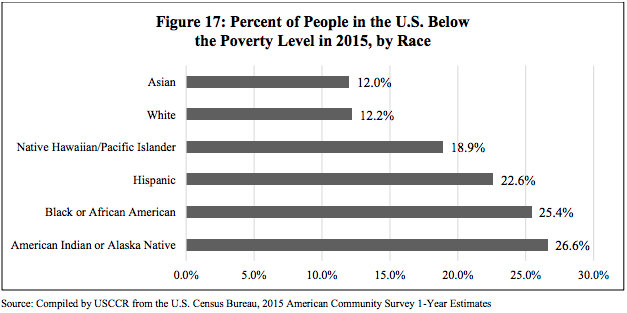
School segregation is still an issue in US
While everybody remembers Martin Luther King Jr., few talk about the segregation that still haunts our communities.
For many, segregation is a matter of the past. Those who think about black schools frequently imagine an argument for a film like Dangerous Minds, and the argument persists as such: a movie script.
But the U.S. Commission on Civil Rights just published its annual report exposing a more disturbing phenomenon in our current society: resegregation.
According to the document, “the report examines the funding of K-12 education and how the inequitable distribution of these funds negatively impacts the educational opportunities of low-income students and students of color.”
The Commission’s Chair, Catherine E. Lhamon explains in their Letter of Transmittal that, “the majority of the Commission found that many students in the U.S. living in segregated neighborhoods and concentrations of poverty do not have access to high-quality schools simply because of where they live, and that there is potential for housing policy to help provide better educational opportunities for these students.”
Moreover, Lhamon exposes how the low-income and color students are “often relegated to low-quality school facilities”, where there’s a lack of elementary resources (teachers, materials, technology) in order to achieve a high-quality education.

It was 61 years ago that the Court ruled in favor of the Civil Rights Movement in the Brown v. Board of Education case, under the argument of education as “a right which must be available to all on equal terms,” ordering the desegregation of schools at a national level, but circumstances haven’t exponentially changed towards development since then.
RELATED CONTENT
On the contrary, and as the report continues, despite the decrease of practical segregation in our society, public schools are still “racially and economically segregated, exacerbated by concentrated poverty and resegregation in communities across the U.S.”, thereby referring to urban areas wherein 90 of 95 large cities in the country “students of color are more likely to attend public schools with low-income than are white students.”
The transformation of national demographics during the past few years has changed the definition of “minority”, especially after the fast growth of the Hispanic population that has gradually become the predominant minority in public schools, with an 18% of enrollment only during the scholar year 2002-2003.
Furthermore, a recent study carried out by the Southern Education Foundation found that “the majority of students enrolled in public schools in the U.S. come from low-income households.”
This proves the deep connection between racial and ethnic minority enrollment and poverty.
The main differences between predominantly white and high-income schools and its counterpart are evidenced in the access to STEM courses, the quality of athletic and extracurricular programs, the teachers’ income, and the general opportunities of pursuing a professional career.
For the authors of the Commission on Civil Rights, the solution is “to balance the playfield” between both realities, emphasizing on school funding, “so that the amount of local tax dollars does not dictate the quality of the school district.”











LEAVE A COMMENT: